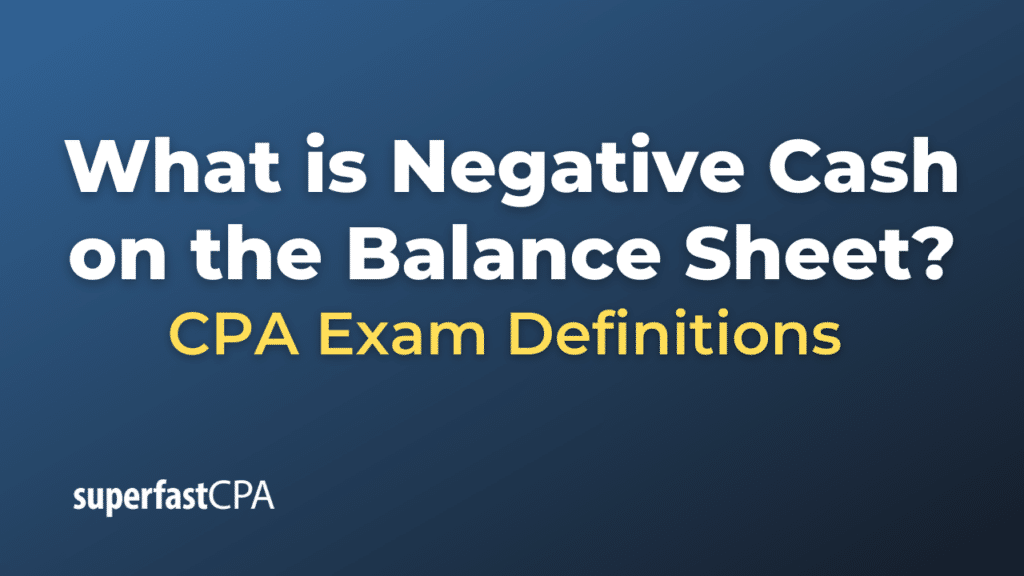Negative Cash on the Balance Sheet
A company cannot have negative cash on a balance sheet because cash is a physical asset that a company either possesses or does not possess. If cash outflows (payments) exceed cash inflows (receipts), the cash account can indeed be depleted to zero, but not below zero. If a company needs to make further payments beyond its available cash, it will have to draw on other resources such as borrowing (which would increase its liabilities), issuing equity, or selling assets.
However, in some cases, a “negative cash” line item might appear on a company’s balance sheet due to an accounting error or misinterpretation. For instance, if a company’s bank account is overdrawn, this is technically a liability (since the company owes the bank money), and should be recorded as such. It should not be recorded as “negative cash”.
The concept of “negative cash” could potentially be considered in a broader, informal sense when a company’s current liabilities (what it owes in the short term) exceed its current assets (what it owns or is owed in the short term, including cash). In this situation, the company may struggle to meet its obligations, which could result in financial difficulty if not addressed.
As always, when analyzing a company’s balance sheet or any financial statement, it’s important to have a proper understanding of the concepts and terms used, and to consult with a financial advisor or accounting professional as needed.
Example of Negative Cash on the Balance Sheet
Let’s take a hypothetical example of XYZ Corporation to understand this:
Suppose XYZ Corporation has the following amounts in its assets:
- Cash: $1,000
- Accounts Receivable: $4,000
- Inventory: $5,000
- Property, Plant, and Equipment: $10,000
And it has the following in liabilities:
- Accounts Payable: $3,000
- Bank Loan: $10,000
- Bonds Payable: $8,000
Now, let’s suppose XYZ Corporation needs to pay an unforeseen immediate liability of $2,500. This payment would decrease the Cash account from $1,000 to -$1,500 ($1,000 – $2,500).
However, cash cannot be a negative number on the balance sheet. Instead, the extra $1,500 would increase the liabilities – perhaps as an increase in the bank loan or a new payable account would be created, such as “Due to Suppliers” or “Overdraft”.
After this payment, XYZ Corporation’s balance sheet would look like this:
- Cash: $0
- Accounts Receivable: $4,000
- Inventory: $5,000
- Property, Plant, and Equipment: $10,000
And in liabilities:
- Accounts Payable: $3,000
- Bank Loan: $11,500 ($10,000 + $1,500 from the extra cash needed)
- Bonds Payable: $8,000
So, while it may feel like the company has “negative cash,” this situation is instead reflected as an increase in liabilities. It’s an indication that the company’s outflows (payments) are greater than its available cash, a situation that the company would likely need to address quickly to maintain its financial health.













